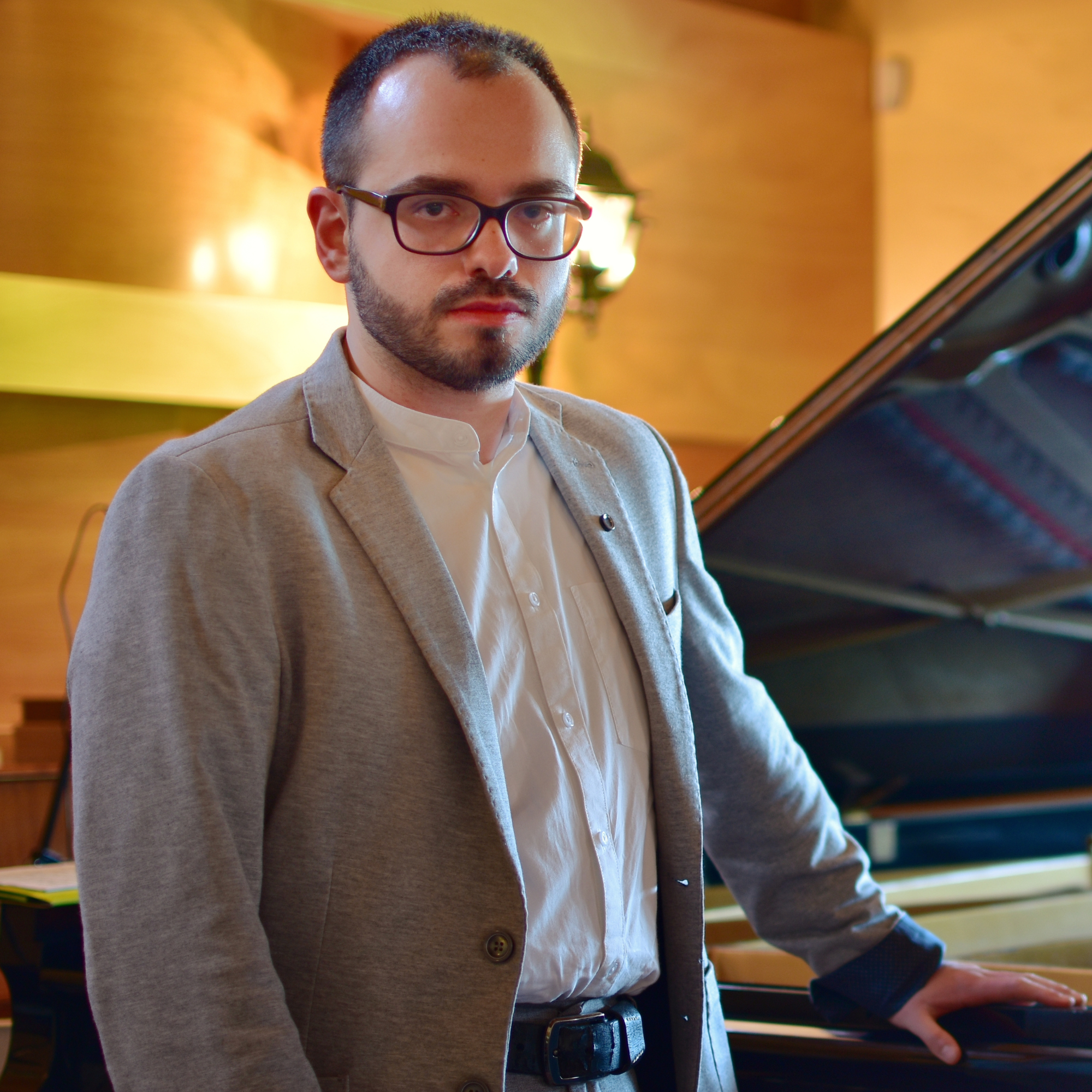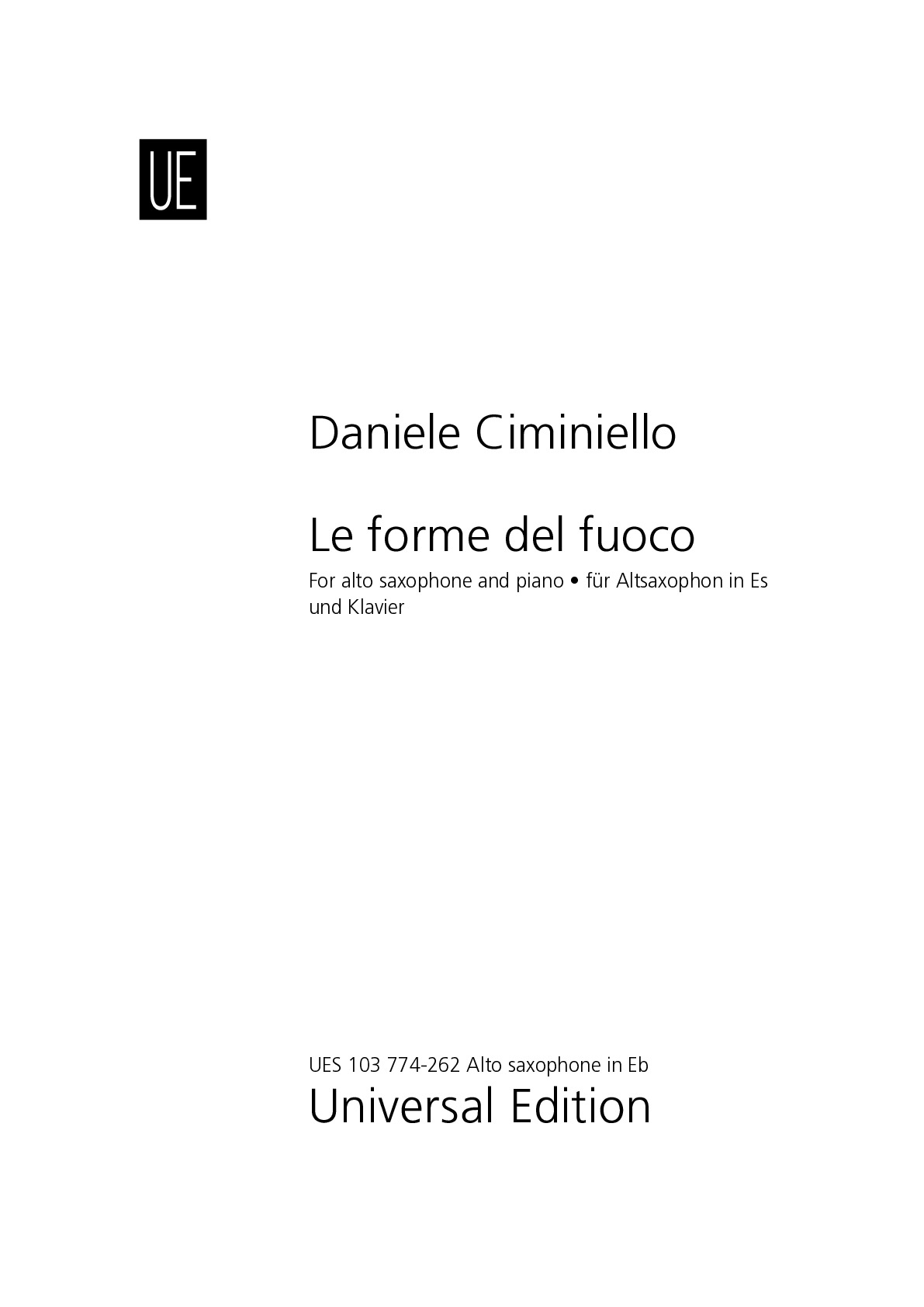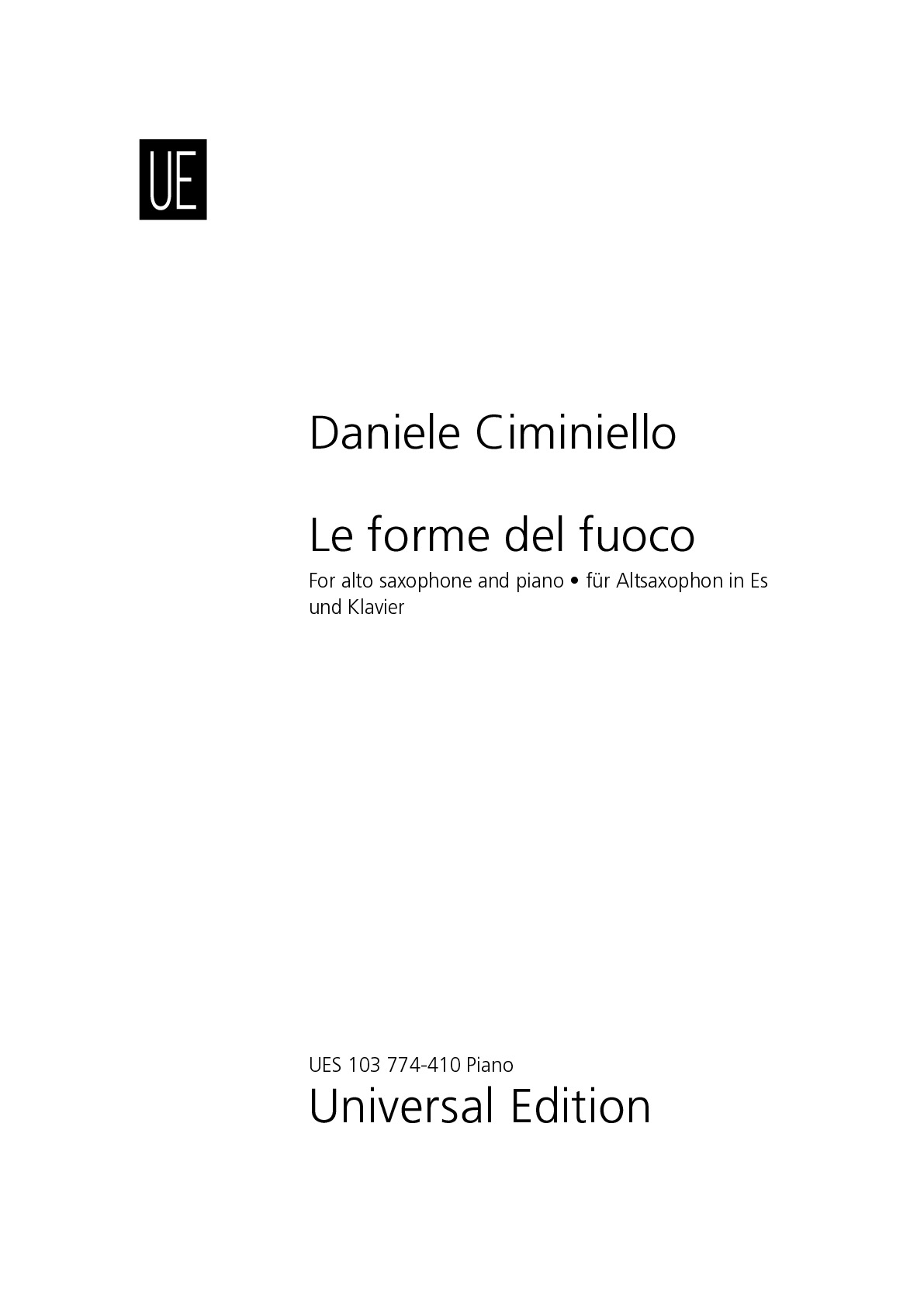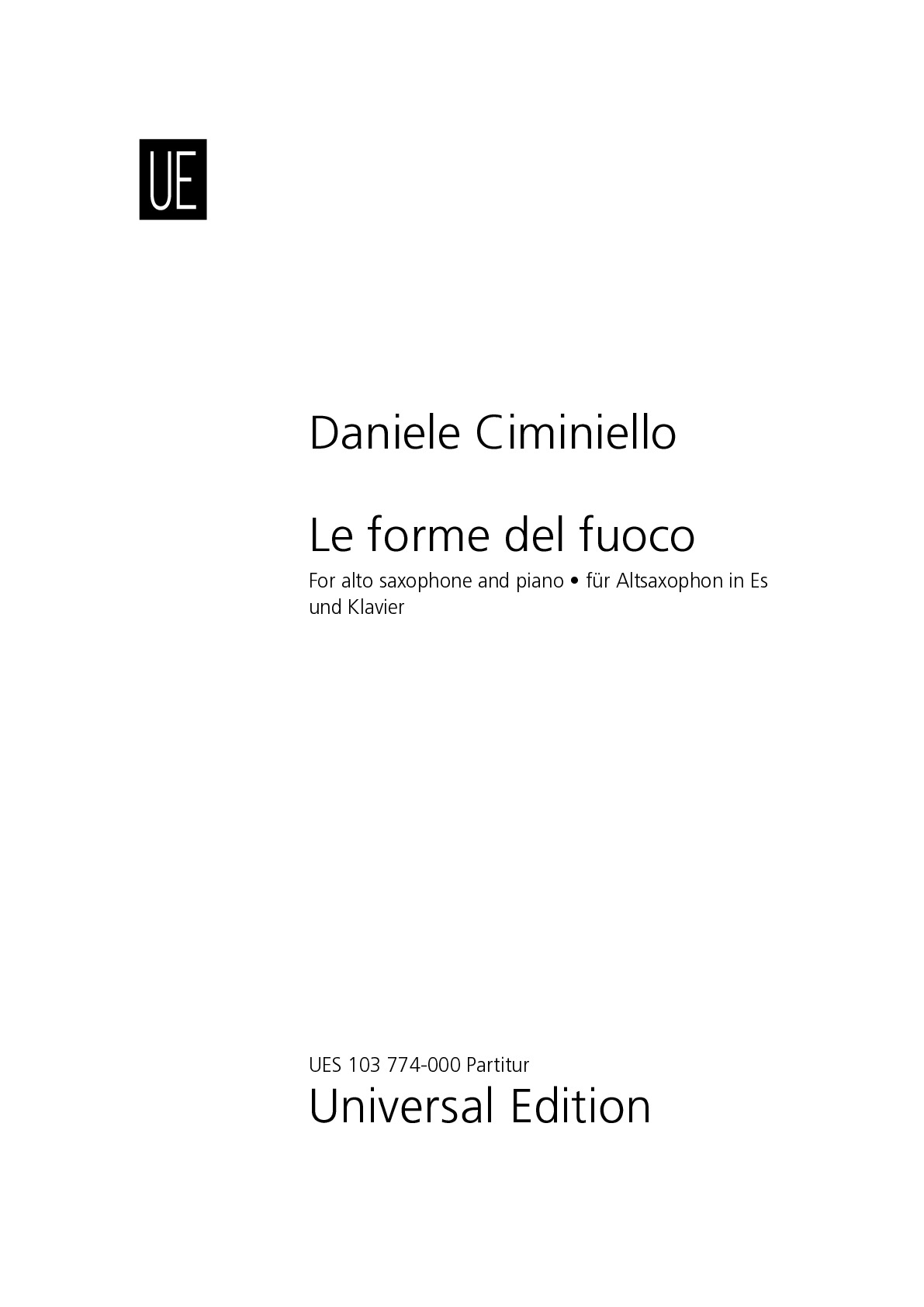

Daniele Ciminiello
Le forme del fuoco
Duration: 7'
Instrumentation details:
alto saxophone in Eb
piano
Le forme del fuoco
Translation, reprints and more

Daniele Ciminiello
Altsaxophon in Es (Le forme del fuoco)Type: Stimme


Daniele Ciminiello
Le forme del fuocoOrchestration: For alto saxophone and piano
Type: Dirigierpartitur
Sample pages
Video
Work introduction
“Le forme del fuoco” (in English: “The shapes of fire”) is a piece that I composed in 2019 on commission from the Carrozzo-Fasiello duo, to whom it is dedicated. The piece is inspired by a passage from the story "The circular ruins" by J. L. Borges, in which the author describes fire as a multiform god capable of assuming any appearance. This evocative and fascinating passage made me imagine a piece with extremely contrasting sections, each inspired by one of the "shapes of fire" that we commonly know, from the spark to the blaze, until it dissolves into ashes. All this happens without any descriptive purpose, but only suggestive and at most figurative.
The first section of the piece is entitled "Scintille I" (in English: “Sparks I”) and opens with a repetitive gesture of the piano, with a ritual character. Through the use of the damper pedal, a sound landscape is created in which the sax enters with a delicate melody, supported by piano chords which contribute to consolidating the dreamlike atmosphere in which the musical discourse takes place. Each phrase played by the sax is structured with an ascending motion that dissolves into soft trills and bisbigliando (microtonal trills). The atmosphere gradually becomes more excited, until the melody of the sax reaches its climax in the high range of the instrument.
At bar 26 the second section, called "In fiamme" (in English: “On fire”), begins. The scales, arpeggios and trills that previously animated the cantabile sax melody now become the main elements of this rather agitated section. The new sax melody that appears at bar 29 has the same rhythmic cell as the previous melody, with intervals of second instead of those of fifth and sixth, to symbolize that the main element, fire, is always the same, but has assumed a different shape.
At bar 46 begins the third section, "Scintille II" (in English: Sparks II), which takes up what was already played in the first section with the addition of a sub-section, "Fiamme sparse" (in English: “Scattered flames”), in which the piano continues its ostinato while the sax performs figures from improvisational character in subtone.
At bar 64 the fourth section of the piece, "Magma", begins. Here the piano plays an ostinato triplet rhythm in the extreme low range, creating a "magmatic" background. On this the sax takes up some elements of the initial melody, completing it. The piece dissolves slowly in the last section, "Cenere" (in English: “Ashes”), in which the only protagonists are the resonance of the piano pedal and the echo of the last microtonal trill of the saxophone, which, like the flame of a candle, slowly dies away leaving only the ashes.
